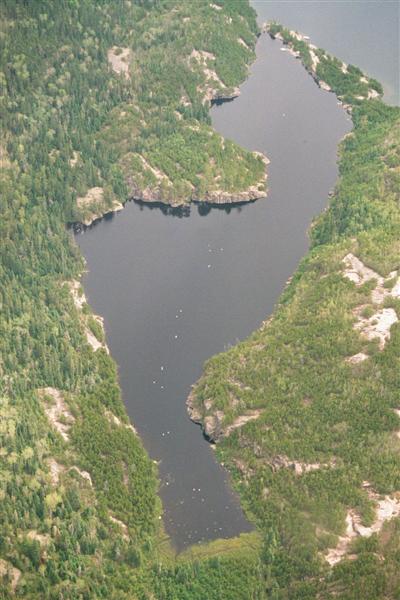
Credit: Photo provided by James Hurley
January 2, 2013
By Marie Zhuikov
University of Wisconsin Water Resources Institute researchers have found that “new” mercury added to a lake during a study got assimilated into the food chain faster than “old” mercury that already existed in the environment. Their results have been used by federal environmental regulators to protect lakes on a nationwide basis and were published online in the Nov. 18 issue of Science of the Total Environment.
Researchers added enriched stable (non-radioactive) isotopes of mercury to Lake 658 and its surrounding watershed in the Experimental Lakes Area in Ontario, Canada. They used different isotopes for the lake, the upland and the adjoining wetland so they could trace which contributed more to the eventual mercury pollution of the plankton and fish.
“It was amazing how fast the mercury got into fish,” said James Hurley, project researcher and director of the Water Resources Institute. “In order to get to that point, the mercury has to get to parts of the lake where it is transformed by microbial processes into methyl mercury. Then it has to get through the food web to accumulate in fish. We started seeing the isotope we added in June accumulate in yellow perch by early fall. By the start of the second year, we were clearly seeing it even in predatory fish.
“The other amazing thing was that after we stopped adding the mercury isotope, we quickly started to see the mercury concentration in predatory fish drop,” Hurley said. These findings were discovered in follow-up studies.
The project was part of a larger study called METAALICUS (Mercury Experiment to Assess Atmospheric Loadings in Canada and the United States), designed to discover how a watershed and its lake would respond to changes in mercury loading.
“Before this study and the other METAALICUS work, we really didn’t have any idea about how long it took for mercury to move through the environment,” said David Krabbenhoft, a lead investigator for METAALICUS and a research hydrologist with the U.S. Geological Survey’s Wisconsin Water Science Center. “This study has been very useful for that.”
The mercury was added to Lake 658 at night because sunlight can vaporize it. The amount added was not excessive – only about two to three times what would typically occur in background levels. The lake was dosed with a colorless mixture of mercury premixed with a batch of lake water once every two weeks from ice-on to ice-off over the course of seven years (three years for this particular study from 2001-2003). Mercury was applied to the watershed with the help of a crop duster plane once per year.
Hurley and Krabbenhoft said the Environmental Protection Agency used the study’s findings to help justify rules for decreasing mercury emissions from power plants through the Mercury and Air Toxics Standards passed in 2011.
The Experimental Lakes Area (ELA) is one of the only places in the world where researchers can practice experimental limnology. Instead of relying on computer models or other simulated conditions, they can study a real lake and see what happens.
Funding for the ELA is scheduled to be cut by the Canadian government and the scientific area may be closed if other funding sources or operators can’t be found.
According to Kevin Hill, communications manager for the Central and Arctic Region for Fisheries and Oceans Canada, discussions about the fate of the ELA are ongoing and, “for reasons of confidentiality, we cannot provide additional information at this time.”
Scientific American reports on this story.



